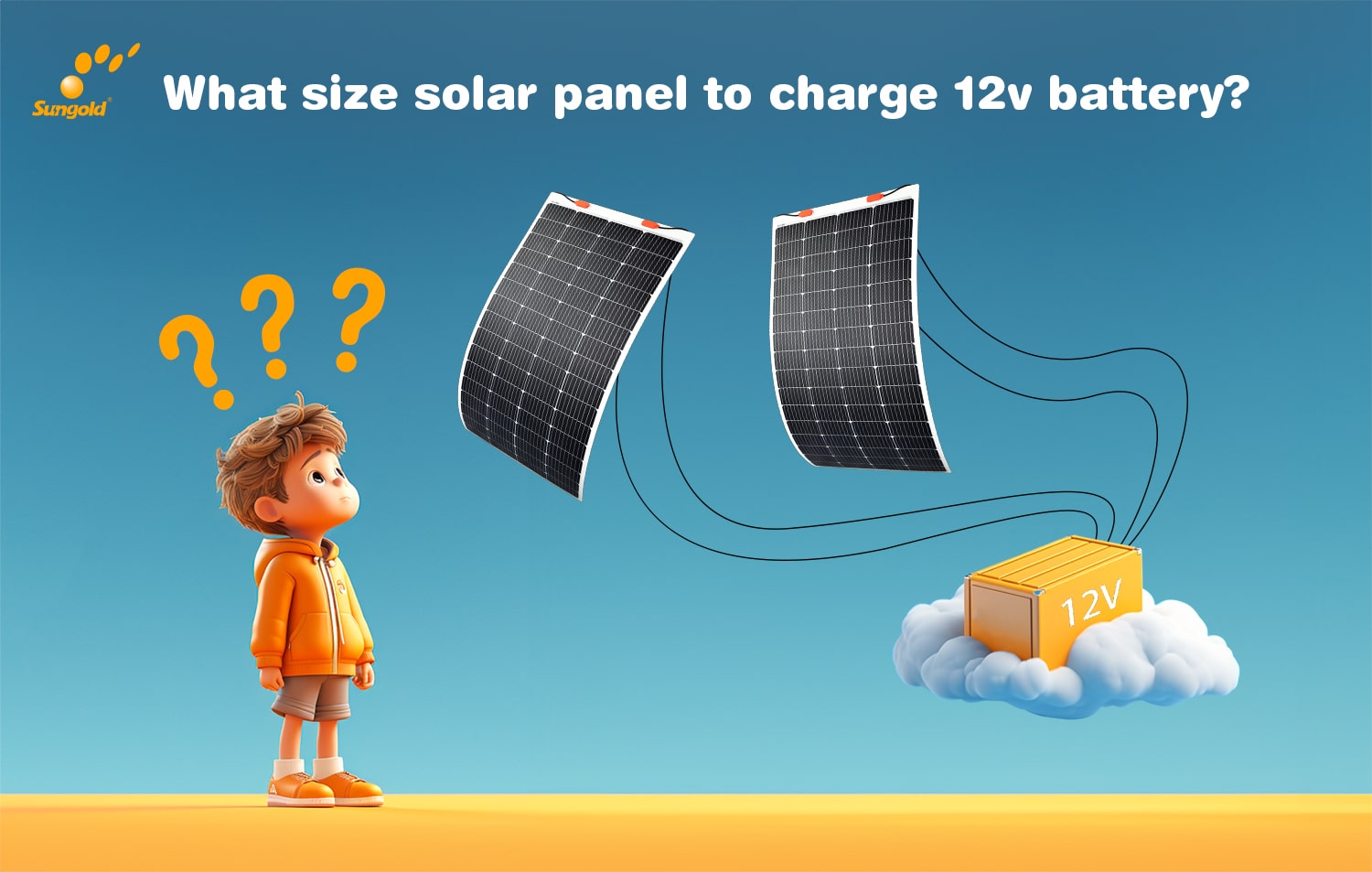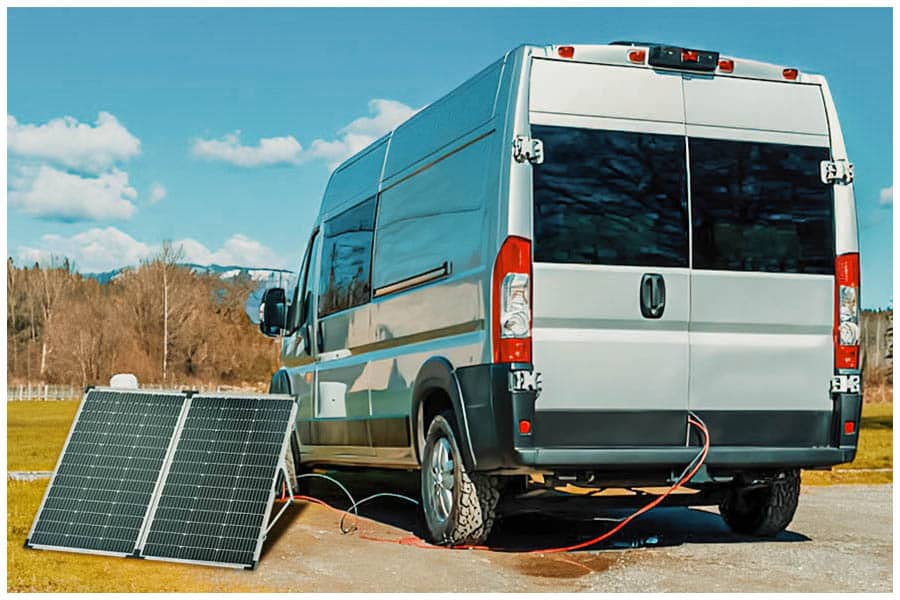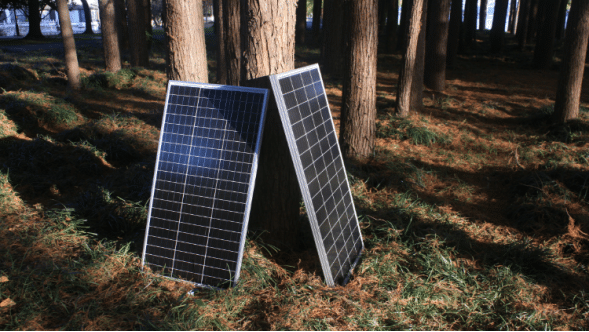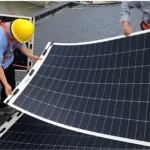When assembling a solar power system, one of the most common questions you encounter is the size of the solar panels needed to charge a 12V battery. Since the battery is a crucial component in most home solar panel installations, understanding the time required to charge this size of battery is an important part of building the energy system.
Unfortunately, there is no one-size-fits-all answer. The time it takes to charge a 12V battery and the size of the solar panels depend on the system’s installation location (amount of sunlight received).
To address these challenges in charging 12V batteries, it is essential to consider the size and performance of the solar panels, the installation location, the sunlight conditions, and the type and status of the battery. By comprehensively evaluating these factors and optimizing the system design, it is possible to enhance charging efficiency and system performance, leading to the construction of a more reliable and efficient solar energy system.

How to charge batteries from solar panels?
To charge batteries using solar panels, you still need a charge controller. The diagram below can help you understand the setup easily.
In a home solar power system, you can utilize solar panels to charge 12V batteries by harnessing sunlight as the energy source. The solar panels convert sunlight into direct current (DC) and deliver it to the batteries, where the energy is stored based on their capacity. Subsequently, an inverter, included in the solar power system, converts the DC electricity into alternating current (AC) and directs the required power to your electronic devices and appliances.
The storage capability of solar panels allows them to collect and store energy generated from sunlight. The larger the battery capacity, the more solar energy can be stored. To achieve this, you need a solar panel, a charge controller, and an inverter. However, for certain portable products like camper van equipment, an inverter may not be necessary as they typically come with built-in inverters.
In a household solar system, you can store excess electricity generated by the solar panels in the battery rather than returning it to the grid. If your batteries are fully charged, but the solar panels continue to produce energy, the surplus power will be sent to the grid.
To ensure proper charging, your solar panels should be connected to the charge controller first. The charge controller monitors the energy stored in the batteries and prevents overcharging. If the battery is depleted, the charge controller also shuts down the system. Before supplying power to your devices, your batteries should be connected to the inverter, which converts the DC electricity collected from the solar panels into AC electricity.
How to charge a rv solar battery
In addition to solar panels, you can also charge a 12V battery using grid power and an alternating current (AC) generator. However, these two methods are not as cost-effective as solar panels because solar panels offer clean and free solar energy resources.
How much current can a 100-watt solar panel generate?
The method to calculate current (amperes) is by dividing power (watts) by voltage (volts). When a 12V solar panel has a rated power of 100W, it refers to the test conducted at its instantaneous rated voltage. Therefore, when you measure the output, the actual voltage is approximately 18 volts. Since watts are equal to volts multiplied by amperes, the current is 5.5 amperes (100 watts divided by 18 volts). So, your solar panel generates a current of 5.5 amperes per hour.
How many solar panels are needed to charge a 200Ah battery?
Suppose you have a 200Ah battery with a usable capacity of 80% due to discharge limitations, resulting in actual available energy of 160Ah. Assuming a two-day battery usage cycle, this means you need to consume 80Ah of electricity each day.
Based on the previous discussion, a 100-watt solar panel generates an average of approximately 30Ah of current per day (based on average good weather conditions). Therefore, on average, you would need three 100-watt solar panels or one 300-watt solar panel to fully charge the battery each day.
Battery capacity.
12V batteries have various energy storage options, measured in ampere-hours (Ah). In off-grid energy storage, gel batteries, lead-acid batteries, and lithium-ion batteries are the most popular battery choices. Many off-grid systems can include multiple batteries simultaneously to meet your energy requirements.
Different batteries have different energy capacities, and as a result, the charging time varies. However, you cannot solely choose batteries based on their charging time. Instead, you must consider how the battery’s capacity can meet the specific energy demands of off-grid applications.
How long does it take to charge the battery?
The total charging time depends on weather conditions and the state and type of the battery. If the battery is completely depleted, the solar panels may take five to eight hours to charge the battery. The charging speed of solar panels is also influenced by the position of the sun in the sky; during peak summer sunlight, the charging speed is faster, while it slows down on cloudy days.
Regarding charging a 100Ah battery, we can use the same calculation method, which involves dividing the power (watts) by the voltage (volts) to obtain the current (amperes). Charging a 12V 20Ah battery requires 5 hours, and charging a 100Ah battery also requires 5 hours. 20Ah multiplied by 12 volts results in a required solar panel size of 240 watts. Therefore, we recommend using a 300-watt or 310-watt solar panel to charge a 100Ah battery.
How many solar panels are needed to charge a 100Ah battery?
We use the same calculation method again, dividing power (watts) by voltage (volts) to obtain the current (amperes). Charging a 12V 20Ah battery requires 5 hours, and charging a 100Ah battery also requires 5 hours. 20Ah multiplied by 12 volts results in a required solar panel size of 240 watts. Therefore, we recommend using a 300-watt or 310-watt solar panel to charge a 100Ah battery.
Adjusting the size of the solar panels.
Using a 300Ah 12V battery (with a capacity of 3600Wh) and an expected daily discharge capacity of 2780Wh as an example, we can determine the size of the solar panels needed to power our equipment and fully charge our battery bank.
To operate these devices, you require 2780 watt-hours of power. In an ideal scenario, your solar panels will provide enough power for the system to meet your daily needs, allowing your battery to charge to its maximum capacity for use during the night or in cloudy conditions.
If we add the total battery capacity to the estimated daily usage, which amounts to 6380Wh, the 12V battery may be fully charged from an empty state while running all the devices.
Based on the estimation of 6380Wh, we can calculate the required power for the solar panels. Solar panels are sold in watts. It’s important to note that solar panels don’t always operate at their peak efficiency, so estimating the generation at 70% of each panel’s capacity will give you a more accurate indication of their typical output.
To achieve 6380 watt-hours in a typical 12-hour day, we can perform a simple calculation: 6380Wh (required generation) divided by 12 hours (average daily sunlight hours) = 531.67 watts. In this example, we need solar panels to generate 532 watts per hour over 12 hours to meet our energy needs.
Using our previously estimated 70% generation, we can further calculate 531.67W / 0.7 = 759.52W. With this calculation, we determine the size of the solar system required to provide adequate power for the 12V battery system, including daily losses.
Solar panels array used for a 12V battery system.
If the solar panels cannot meet your energy needs individually, you can combine multiple solar panels to achieve the required wattage. In the example mentioned above, you could combine four 200-watt solar panels to create an 800-watt system, exceeding the required 759.52-watt output, or you could combine two 400-watt solar panels.
When connecting solar panels in parallel or series, you need to consider the total output voltage and current intensity to select the appropriate solar charge controller.
If solar panels are connected in series, the total system voltage is the sum of the voltage of each individual panel, while the current remains unchanged. At the same time, the total current is the sum of the total current of each panel, while the voltage remains constant.
What is the environmental impact of the carbon footprint of solar panels?
The carbon footprint of solar panels on the environment primarily comes from the materials used in their construction and manufacturing processes. Typically, solar panels offset their carbon emissions after several years of use.
FAQ:
Q: How many solar panels do I need to charge a 12V battery?
A: How Many Solar Panels Do I Need to Charge a 12V Battery? You only need one 12V solar panel to charge a 12V battery. For instance, a 100-watt solar panel is a common solar panel size you could use to charge some of the most common 12V battery capacities.
Q: How many watts does it take to charge a 12V battery with solar panels?
A:So, at a minimum, you’ll need a 120-watt rated panel to charge your 12V battery within ten hours. Keep in mind that various other factors determine the panel’s recharge efficiency
Q: Can a 100W solar panel charge 2 12V batteries?
A: How Many Batteries Can a 100-Watt Solar Panel Charge? Typically, a 100-watt solar panel at its maximum efficiency can charge a single 100Ah 12V battery in a day.









